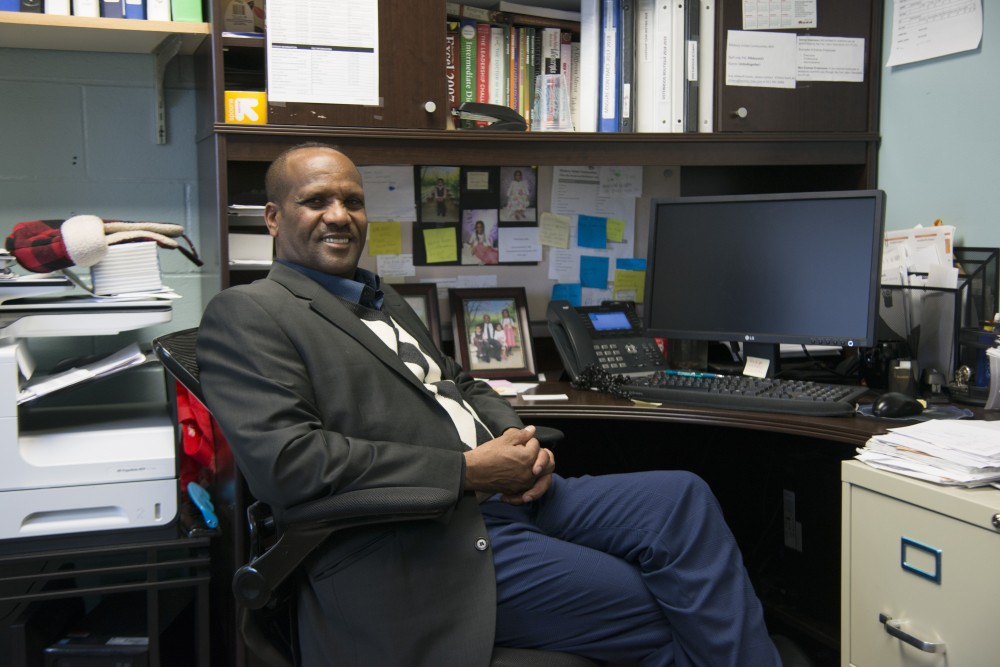Due to the high number of crime alert notifications she receives from the University of Minnesota concerning crime in the Cedar-Riverside neighborhood, freshman Claire Connolly doesn’t feel safe in the area.
Before she treks from Middlebrook Hall to a bus stop in the Cedar-Riverside area, Connolly often checks if she has her pepper spray. The bus will drop her off in front of Middlebrook on nights and weekends, and Connolly said she is relieved when it does.
With the goal of reducing stigma about the neighborhood, the Minnesota Student Association is working on an initiative to educate students about the Cedar-Riverside neighborhood. MSA aims to roll out the initial program messages in the spring of 2019. Right now, it’s looking at the best ways to disseminate information about the neighborhood.
“What we’re planning on doing is just really trying to bridge the gap between students and the Cedar-Riverside, West Bank area,” said Tala Alfoqaha, director of MSA’s Diversity and Inclusion committee, who is spearheading the project. “Right now, there are a lot of negative misconceptions and it’s very much rooted in misperception about how safe the area is.”
MSA is planning on doing an extensive messaging campaign, highlighting the events and local businesses in the Cedar-Riverside neighborhood. It’s also planning to work with the University and use its resources to create strong relationships with neighborhood businesses.
The area’s community members say they are aware of the stigma around the neighborhood.
“It is one of the safest, I can say, one of the most welcoming communities,” said Amano Dube, director of the neighborhood’s Brian Coyle Center. The center is a non-profit organization that provides residents with education classes, a free food distribution program and other health and wellness resources.
Some people may not feel safe in the area because of the messages they’ve heard from media outlets, which often portray the community as a “no-go zone,” Dube said. When that type of information circulates among those not from the Cedar-Riverside neighborhood, it will inevitably make some feel unsafe, he said.
Approximately 8,500 people lived in the Cedar-Riverside area in 2016, according to data from Minnesota Compass. According to the website, approximately 48 percent of its population is African American.
Part of the reason MSA is conducting the project is because the neighborhood is so close to campus. There are many events going on that many students would be interested in attending, Alfoqaha said.
The University and the Cedar-Riverside area are very connected, Dube said. He said the area has been a part of some University research and aid programs.
However, Dube said he thinks the University is not doing enough to engage with the neighborhood. For there to be a real, positive relationship between the two areas, the University needs to take much stronger action to address the issues, he said.
“I think the University has to create opportunities to cross over or [host events that] bring in opportunities to the community as much as possible,” he added.
A large part of the Cedar-Riverside population consists of families with underage children, Dube stated. Because the neighborhood is so close to the University’s West Bank, he said many parents hope their kids will attend the University and become scholars.
Some students are aware of the common perceptions of the Cedar-Riverside neighborhood but still think positively about the area.
“I think kind of the general view on it is that it’s kind of dangerous and not that great a neighborhood,” said psychology freshman Katie DeWitt.
But DeWitt said she likes the diversity of the neighborhood, and people will be safe if they simply take the safety precautions they would walking through any neighborhood.
“There’s just a lack of student migration and student engagement with that area,” Alfoqaha said, adding that this often adds to fear.
If someone is scared or curious about the Cedar-Riverside neighborhood, Dube said, those individuals should go to the community and actually engage with community members.
“Our advice to feel safe? Come here. Come and engage with people,” he said.









